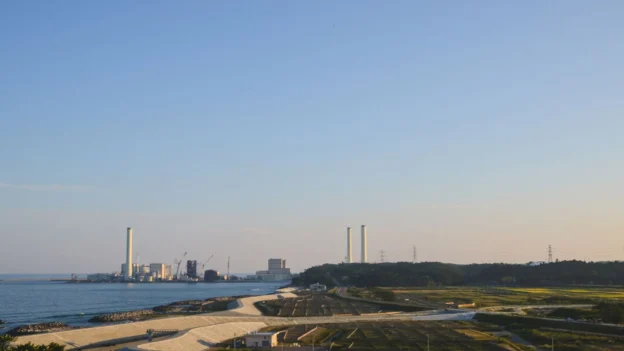To tackle the removal of melted nuclear fuel from the crippled Fukushima nuclear power plant in Japan, a remote-controlled robot has been unveiled that will be tasked with recovering small fragments of the debris . This progress has been made known through a demonstration by the plant operator.
How will the robot remove the nuclear fuel?
Tokyo Electric Power Company Holdings (TEPCO) showed a few days ago how the teleoperated robot will carry out the recovery of tiny fragments of melted fuel from one of the three damaged reactors, a task scheduled for later this year.

The robot will be remotely controlled. Source: Associated Press
This event marks the first time such an operation will be attempted since the core meltdown in 2011.
Separately, TEPCO has plans to use a robot with extendable tubing, called “telescoping style,” to work on Fukushima Daiichi’s No. 2 reactor. This robot will test the removal of debris from the primary containment vessel in October, a job that has suffered significant delays.
Originally, decommissioning was to begin by the end of 2021, but various obstacles have delayed the process, most notably the complexity of the recovery from the 2011 earthquake and tsunami.
During the demonstration at the Mitsubishi Heavy Industries shipyard in Kobe, western Japan, a grapple-equipped device was observed slowly descending from the telescopic tube into a pile of gravel, picking up a small fragment. In this initial test, TEPCO plans to remove less than 3 grams (0.1 ounces) of debris at the Fukushima plant.
Likewise, Yusuke Nakagawa, director of TEPCO’s fuel debris recovery group, highlighted the importance of this test. “We consider the upcoming fuel debris removal test of Unit 2 to be an extremely important step in carrying out future decommissioning work in a consistent manner. It is crucial to proceed with the elimination in a safe and consistent manner“, he stated.
It is important to mention that some 880 tons of highly radioactive melted nuclear fuel still remain inside the three damaged reactors. Critics argue that the 30- to 40-year timeline set by the government and TEPCO for the cleanup of Fukushima Daiichi cleanup of Fukushima Daiichi is too optimistic, given that each reactor has different damage and plans must be adjusted to these conditions.
Finally, a better understanding of the remnants of melted fuel inside the reactors is essential for their decommissioning. Earlier this year, TEPCO deployed four mini drones in the No. 1 reactor’s primary containment vessel to capture images of areas inaccessible to robots, which will help improve decommissioning strategies.
Follow us on social media and don’t miss any of our posts!
YouTube LinkedIn Facebook Instagram
Source and photo: abcnews.go.com

